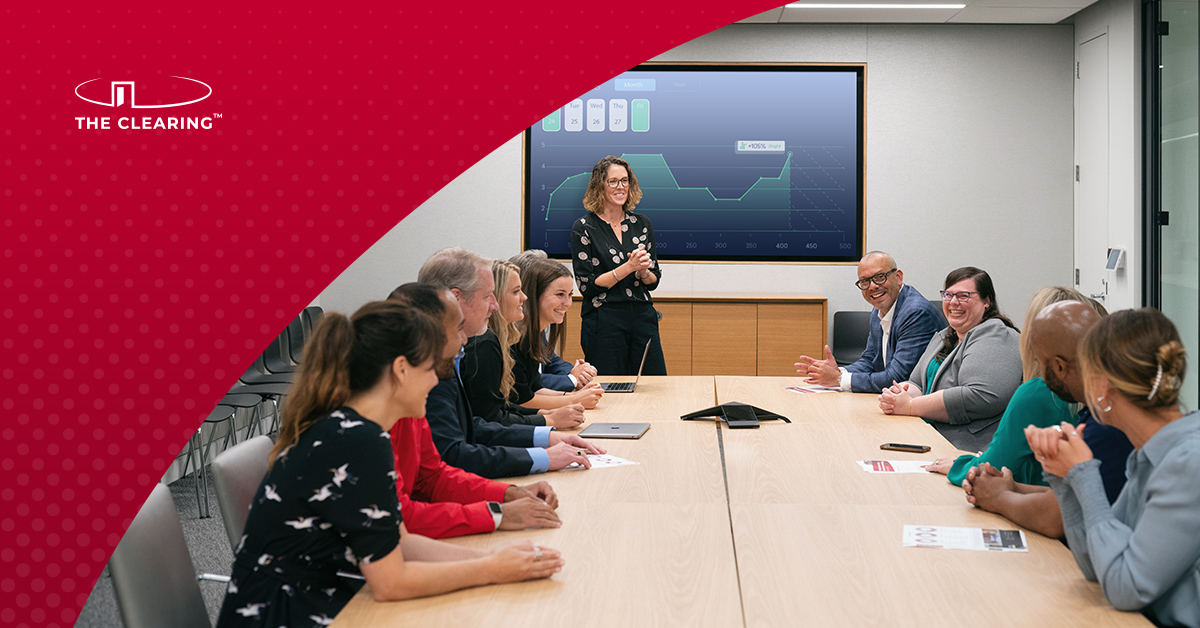As my colleague Cara Valentino recently shared, employees are having many feelings when it comes to physically going back to the office. As The Clearing’s Talent & Delivery Excellence lead, I’m partnering with our HR team to ensure our employees experience a smooth, stress-free return to the office.
Some employees are returning to a space they haven’t seen in more than a year. For others hired in the midst of the pandemic, they’ve never been to our home base in Washington, D.C., at all. Of course, every company’s approach to re-entry is different (all-in, hybrid, etc.) and each must choose the strategy that optimizes the experience of its employees and customers while staying true to its mission.
So while I can’t offer a one-size-fits-all approach, I can offer 3 key tips to set you and your teams on a path for re-entry success.
“Have empathy and understanding for where people are on the re-entry spectrum – and remember to be respectful vs. judgmental of people’s decisions regarding health and safety.”
TIP #1: Be crystal clear about your re-entry strategy.
Once your formal plan is announced, be ready to field questions given you’ll be operating in what may feel like a brand-new environment. Plan for the unexpected.
Tactical Tips
- Tie your re-entry strategy to your corporate strategy.
- Clearly define your approach to health and safety practices/guidelines.
- Have clear tips and resources ready for using office technology, such as computers, projectors, printers, wi-fi networks, etc.
- Communicate, communicate, communicate: hold open forums, office hours, create a shared drive with re-entry resources, etc. for employees to discuss re-entry. It’s critical for both new hires and veteran employees to understand current policies and know where to go to access information.
TIP #2: Be explicit and consistent about expectations.
Leaders must name what behaviors are acceptable in these conditions and what behaviors are unacceptable. For example, how often do you need employees to go into the office, and under what circumstances? When employees are asked to come into the office make it clear why. If you have expectations around how often folks should be visiting the office, name them. And be consistent: one person saying you should be in two days vs. someone else saying four days will create (avoidable) tension in the workplace.
Tactical Tips
- Be explicit with expectations for new hires. New hires won’t have the context around pre-pandemic office expectations let alone new corporate expectations given they may never have been to the physical workspace before.
- Educate employees on when it’s important to be in the office. For example, if a team or a client’s needs require an in-person meeting to help support the work, it’s important for employees to understand the why behind the ask.
- Leverage this expectation-setting resource we developed at The Clearing to help your teams better understand each other’s work style preferences.
TIP #3: Honor the Human.
Have empathy and understanding for where people are on the re-entry spectrum. Everyone has different comfort levels about re-entry and being in different situations.
Tactical Tips
- Be respectful vs. judgmental of people’s decisions regarding health and safety.
- Give people time to prepare. Employees may need to juggle childcare needs, pet schedules, or even their wardrobe after spending the last year and a half working remotely.
- For the Physical Workspace: Make the office welcoming, especially if folks haven’t been in the office for a while. Consider offering breakfast to entice employees back into the space, or host open houses to feature new technology or office layout plans to better enhance employees’ in-office experiences.
- For Teams: Define and/or audit the working norms you established in the virtual environment and ask key questions: What are norms that were established in our working remote environment that we want to bring back into the office with us? What are the lessons we learned from the virtual world that we want to bring forward to help us work better together?
- For New Hires: Focus on engagement. Remember, it’s easy for them to feel disconnected after entering the company completely virtually. If safe, hold (in some cases belated) new-hire orientation sessions or in-person team building activities to bring them into the space and get them connected with their colleagues.
If you have questions about leading through re-entry or would like to share best practices you’ve seen success with, I’m always available to chat at theresa.west@theclearing.com.
